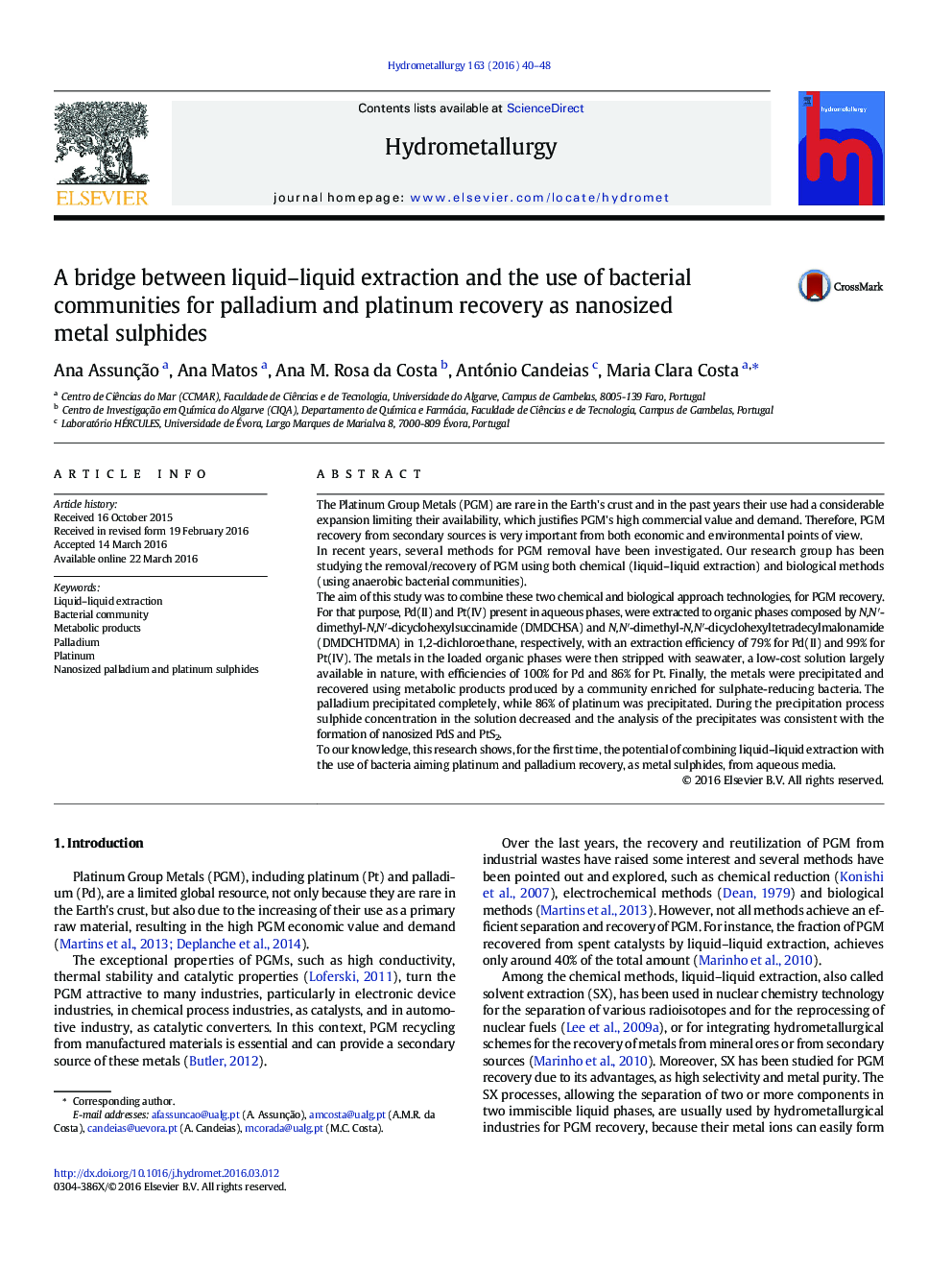| کد مقاله | کد نشریه | سال انتشار | مقاله انگلیسی | نسخه تمام متن |
|---|---|---|---|---|
| 211853 | 462022 | 2016 | 9 صفحه PDF | دانلود رایگان |
• Potential of combining chemical (SX) and biological approaches for PGM recovery
• DMDCHSA as a new and efficient molecule for the liquid–liquid extraction of Pd(II)
• Seawater as an efficient and low-cost Pt and Pd stripping agent
• Efficient bioremoval of Pd and Pt from metal loaded stripping solutions
• Pd and Pt biorecovery as nanosized PdS and PtS2
The Platinum Group Metals (PGM) are rare in the Earth's crust and in the past years their use had a considerable expansion limiting their availability, which justifies PGM's high commercial value and demand. Therefore, PGM recovery from secondary sources is very important from both economic and environmental points of view.In recent years, several methods for PGM removal have been investigated. Our research group has been studying the removal/recovery of PGM using both chemical (liquid–liquid extraction) and biological methods (using anaerobic bacterial communities).The aim of this study was to combine these two chemical and biological approach technologies, for PGM recovery. For that purpose, Pd(II) and Pt(IV) present in aqueous phases, were extracted to organic phases composed by N,N′-dimethyl-N,N′-dicyclohexylsuccinamide (DMDCHSA) and N,N′-dimethyl-N,N′-dicyclohexyltetradecylmalonamide (DMDCHTDMA) in 1,2-dichloroethane, respectively, with an extraction efficiency of 79% for Pd(II) and 99% for Pt(IV). The metals in the loaded organic phases were then stripped with seawater, a low-cost solution largely available in nature, with efficiencies of 100% for Pd and 86% for Pt. Finally, the metals were precipitated and recovered using metabolic products produced by a community enriched for sulphate-reducing bacteria. The palladium precipitated completely, while 86% of platinum was precipitated. During the precipitation process sulphide concentration in the solution decreased and the analysis of the precipitates was consistent with the formation of nanosized PdS and PtS2.To our knowledge, this research shows, for the first time, the potential of combining liquid–liquid extraction with the use of bacteria aiming platinum and palladium recovery, as metal sulphides, from aqueous media.
Journal: Hydrometallurgy - Volume 163, August 2016, Pages 40–48
